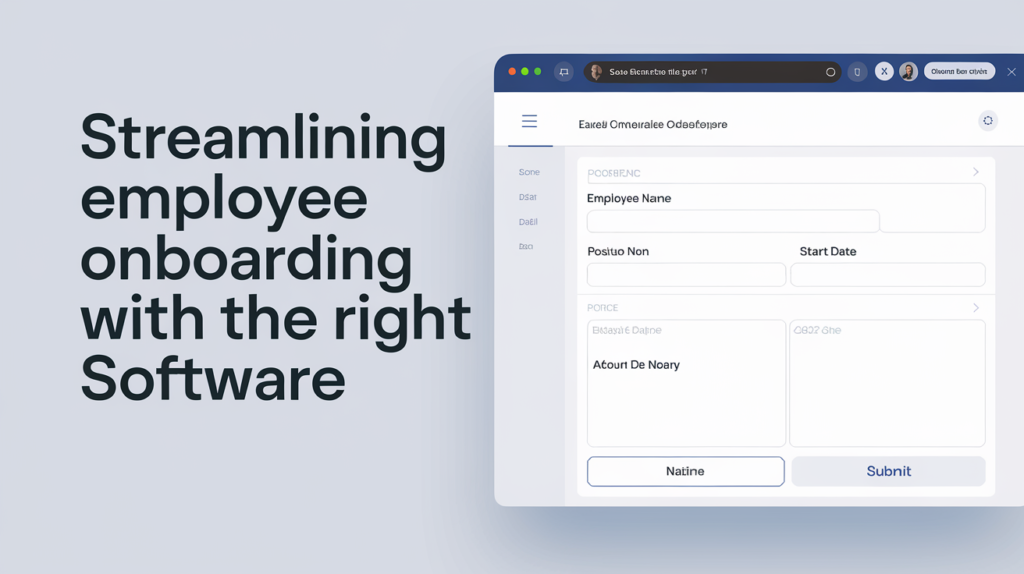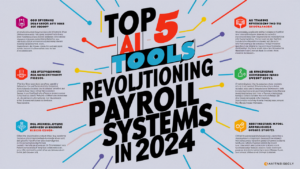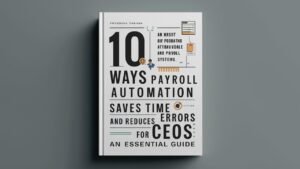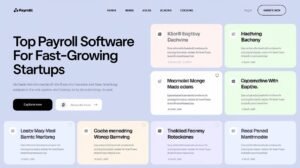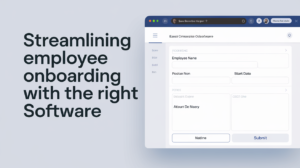Streamline Employee Onboarding is a crucial process that lays the foundation for a new hire’s success within a company. A streamline employee onboarding experience ensures new employees are quickly integrated into the organization, understanding their roles, responsibilities, and the company’s culture. Effective onboarding not only boosts morale and productivity but also positively impacts retention rates and overall organizational efficiency.
In this blog, we explore how the right software can revolutionize the onboarding journey, making it seamless and beneficial for both HR teams and new hires.
The Challenges of Traditional Employee Onboarding
Traditional onboarding methods often rely heavily on manual processes, such as filling out paperwork, scheduling face-to-face meetings, and repeated follow-ups. These processes can be cumbersome, inconsistent, and prone to human error, leading to a less-than-ideal experience for new hires.
Common challenges include:
- Excessive Paperwork: The need for new hires to fill out multiple forms and contracts by hand can be time-consuming and error-prone.
- Inconsistent Experiences: Depending on the manager or HR representative, onboarding experiences can vary significantly, leading to confusion or missed steps.
- Delayed Access: New employees often face delays in gaining access to essential resources, such as software or security credentials.
- Communication Breakdowns: Important details may be missed or overlooked, leading to frustration.
- Limited Progress Tracking: HR teams struggle to track each new hire’s progress and compliance with required training and paperwork.
Traditional onboarding methods often rely heavily on manual processes, such as filling out paperwork, scheduling face-to-face meetings, and repeated follow-ups. These processes can be cumbersome, inconsistent, and prone to human error, leading to a less-than-ideal experience for new hires.
Common challenges include:
- Excessive Paperwork: The need for new hires to fill out multiple forms and contracts by hand can be time-consuming and error-prone.
- Inconsistent Experiences: Depending on the manager or HR representative, onboarding experiences can vary significantly, leading to confusion or missed steps.
- Delayed Access: New employees often face delays in gaining access to essential resources, such as software or security credentials.
- Communication Breakdowns: Important details may be missed or overlooked, leading to frustration.
- Limited Progress Tracking: HR teams struggle to track each new hire’s progress and compliance with required training and paperwork.
Benefits of Using Employee Onboarding Software
Employee onboarding software addresses these challenges head-on by automating many aspects of the onboarding process. Key benefits include:
- Automation of Administrative Tasks: Software can automatically handle paperwork, document submission, and approvals, reducing the burden on HR.
- Consistency Across New Hires: Onboarding software standardizes processes, ensuring every new employee receives the same experience.
- Improved Communication: Integrated messaging and reminders keep both HR and new hires informed and on track throughout the onboarding process.
- Progress Tracking and Compliance: HR teams can monitor the status of each new hire in real-time, ensuring all tasks are completed on schedule.
- Enhanced New Hire Experience: New employees are better informed and prepared for their roles, leading to faster integration and greater job satisfaction.
Key Features to Look for in Employee Onboarding Software
When selecting onboarding software, it’s essential to ensure it meets the specific needs of your organization. Look for the following features:
- User-Friendly Interface: The platform should be intuitive and easy to navigate for both HR professionals and new hires.
- Automated Workflows: Automating repetitive tasks such as document submission, training assignments, and scheduling simplifies onboarding.
- Customizable Templates: The software should allow for customizable emails, task lists, and onboarding workflows tailored to different roles.
- Integration Capabilities: Ensure the software integrates seamlessly with other HR systems, such as payroll, performance management, and learning platforms.
- Progress Tracking: A clear dashboard for tracking onboarding tasks, milestones, and compliance is essential for HR teams to manage the process effectively.
- Communication Tools: Built-in messaging features enhance communication between HR teams and new hires, reducing delays and confusion.
Top Employee Onboarding Software Solutions
To help you streamline your onboarding process, here are some of the top-rated onboarding software solutions:
BambooHR: BambooHR offers a comprehensive HR platform with a dedicated onboarding module that simplifies paperwork and task management. It provides customizable workflows to ensure consistency across the board. Read more
WorkBright: A mobile-first onboarding tool, WorkBright allows new hires to complete paperwork and training from any device, making it ideal for remote or field workers.
Zenefits: Zenefits is an all-in-one HR platform that includes a powerful onboarding module, offering automation for document signing, benefits enrollment, and task tracking.
Rippling: Rippling automates the onboarding process by integrating payroll, benefits, and IT, ensuring that new hires receive everything they need, including equipment and software access.
How to Implement Onboarding Software Successfully
Implementing onboarding software requires thoughtful planning and execution. Follow these steps for a smooth transition:
- Assess Your Needs: Identify the gaps and challenges in your current onboarding process that you want the software to address.
- Evaluate Software Options: Research software platforms based on features, pricing, and user feedback to choose the one that fits your organization.
- Plan the Rollout: Develop a detailed implementation plan with timelines, responsible team members, and milestones for testing.
- Train Your HR Team: Ensure your HR staff and managers are well-versed in using the software and understand its functionalities.
- Monitor and Optimize: Track the software’s performance and gather feedback to make necessary adjustments and improvements.
Enhancing the Onboarding Experience with Additional Tools
Beyond core onboarding software, complementary tools can further enhance the experience for new hires:
- Learning Management Systems (LMS): Platforms like TalentLMS or Moodle can offer structured training programs to onboard new hires more effectively.
- Digital Signature Tools: Services like DocuSign or Adobe Sign allow new hires to sign contracts and paperwork digitally, speeding up administrative tasks.
- Employee Engagement Platforms: Tools such as Trello or Asana can facilitate task allocation, collaboration, and progress tracking during the onboarding process.
Measuring the Success of Your Onboarding Process
To determine if your onboarding process is effective, it’s important to track key performance indicators (KPIs). Some important metrics to measure include:
- Time to Productivity: Assess how quickly new hires become fully productive in their roles.
- Employee Retention Rates: Analyze retention rates to understand if your onboarding process is contributing to long-term employee satisfaction.
- New Hire Feedback: Collect feedback from new employees about their onboarding experience to identify areas for improvement.
- Task Completion Rates: Ensure all required onboarding tasks are completed on time, with no delays in access to resources.
Conclusion: Empowering New Hires Through Streamlined Onboarding
A well-structured and streamlined onboarding process is essential for setting new hires up for success. By leveraging the right onboarding software, companies can automate administrative tasks, ensure a consistent onboarding experience, and keep communication clear and proactive.
Investing in high-quality onboarding software not only enhances the new hire experience but also leads to higher retention rates, improved productivity, and a more efficient HR team. As HR technology evolves, organizations that stay updated with the latest tools and best practices will enjoy a competitive advantage in retaining top talent.

